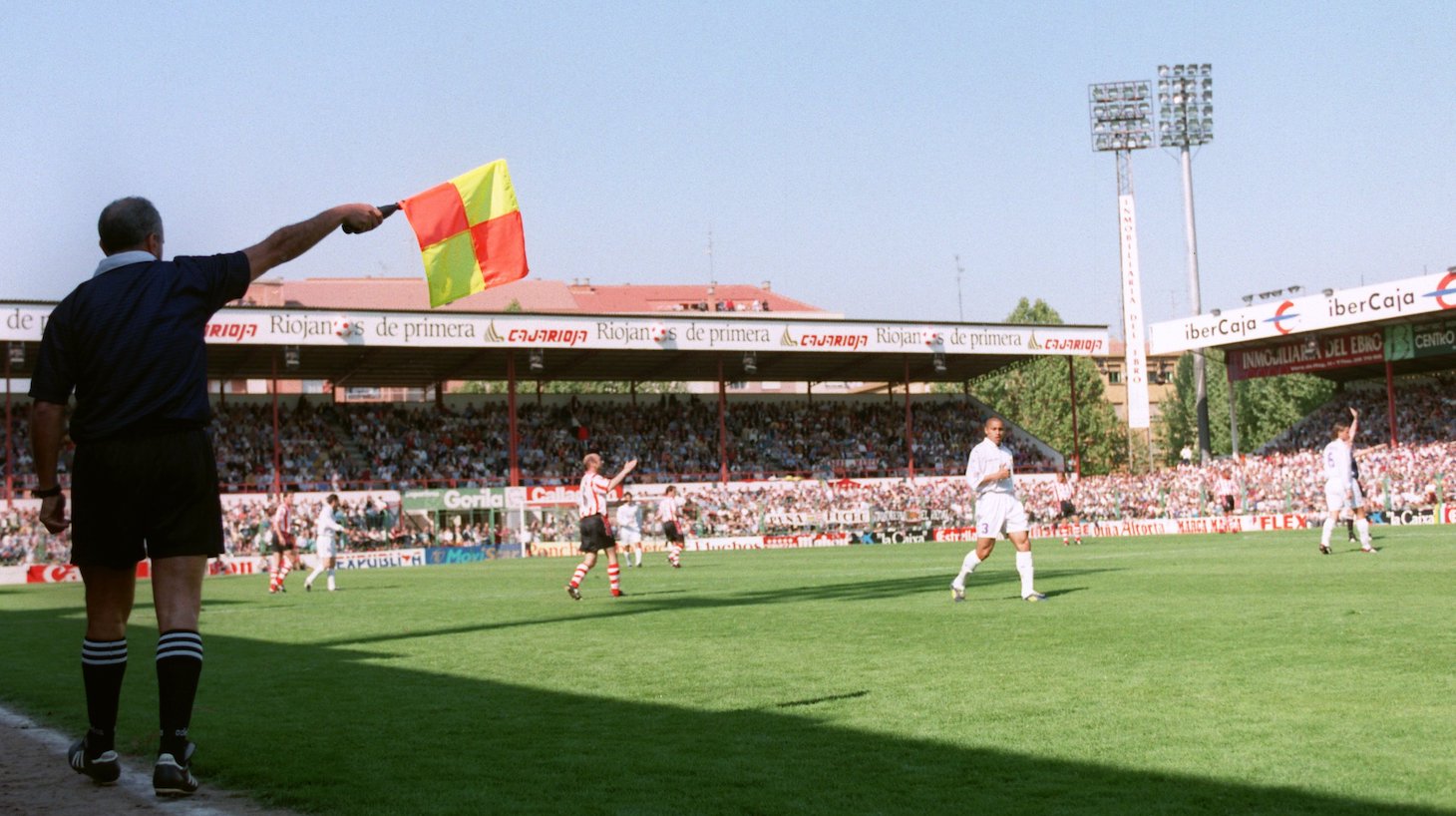Two of the many tyrannies of being a soccer fan are the existence of the offside rule and the existence of people who do not know what it is. Thus comes a solemn duty: being the explainer. How else will they understand why the strikers don’t just wait around the goal and wait for a teammate to lob the ball down there? How else will they appreciate the beauty and skill of a perfectly timed run? How else will they know why we just threw the remote at the TV in a VAR-induced fury?
For every major tournament that goes by, I am worn out by my mostly ineffective ministrations aimed at explaining the rule to less-seasoned fellow viewers. And it always goes the same way: an otherwise beautiful goal gets called offside, and while the players get on with the game, I find myself sputtering about one-defender-here and if-she-had-just-waited-half-a-second-to-make-that-run and hopping around like a fool trying to demonstrate the rule, all received by baffled looks from the people I’ve kindly peer pressured into watching the match with me.
This is my looming fate as we ramp up into this World Cup, especially since the referees will be live-announcing VAR calls on a microphone, NFL-style. I predict that this will only heighten the spotlight on the offside rule, and on my responsibility to explain it.
In anticipation for this chore, I consulted my fellow Defector soccer sickos about their favored techniques. You’ll see the rankings we settled on below, but first, some considerations:
We debated if you should mention that the rule is not actually about one defender, but two, because the goalkeeper counts as a defender. Luis made the case that no, you should just say that the attacker cannot be behind the last defender, and if anything weird happens in a game with two defenders behind a goalie, you can amend yourself in the moment. I am ambivalent about this, so I say: know your audience.
The other very confusing element is if you should delineate between being called offside and merely being in an offside position. My advice is to explain what being in an offside position is (having only one or zero opponents between you and their goal), then segue into saying that if you are in an offside position AND affect the play—most often this is when the ball is passed to you, but there are nuances—you’ll be called offside.
With all that being said (and not very gracefully; for a simple rule it sure is devilishly hard to explain), here’s our ranking, from very bad to a little better but still bad.
1. Verbally. So naive of you to try. For what it’s worth, here’s how I typically explain the rule:
A player on the attacking team must have at least two defenders from the other team (usually, that’s one defender and the goalkeeper) between themselves and the goal line when a teammate passes the ball. The exceptions to this rule are during a throw-in, when you’re in your own half of the field, or when the ball is behind the last or second-to-last defender, in which case the ball becomes the offside line. If you are in an offside position and affect the play, the play will be called offside, even if you don’t actually touch the ball.
But it never really works because it’s obviously very convoluted and confusing. We trudge on.
2. With your arms. Albert shared, “I sort of use my hands/arms? One forearm represents the back line of defense, and my other hand points to where you CAN be and where you CAN’T be. (This has like a 20% success rate.)” I can’t say I recommend it, but at least there’s some semblance of visual aid involved.
3. Drawing on a piece of paper. Whipping out the trusty paper and pen is a good instinct; you can mark out a clear field and label your players as well as an actual offside line. But showing movement is hard, and movement is what makes understanding the rule so tricky. Next.
4. Salt and pepper shakers or other random objects. Now you can move your players around the field (table) and use, like, a bottle cap as the ball. But for some people it can be hard to remember if the anthropomorphized salt is the attacker or the defender, because salt and pepper shakers, or cups or whatever objects you’re using, don’t really face one way or the other. This leads me to …
5. Using real people and a ball. If you’re really committed, pulling very confused people onto a patch of grass is a bold move that can be helpful. You could go crazy and set up a little Pugg net to really establish your context, fetch three offside-knowing buddies to help you out (that makes two players on each team), and literally demonstrate the rule in action. The issue here is that while you’re doing your beautiful little run, there’s no way to guarantee that the weary souls you’re going to so much trouble for aren’t admiring the beautiful little daisies growing next to the net.
6. Pointing it out in-game. This technique works best if you have rewind capabilities on whatever channel you’re watching. The in-the-moment explanation, with pausing and pointing, can be effective, but of course one play is only going to lend itself to explaining one aspect of the offside rule. It’s trusty but not broad.
7. Just giving up and showing a fucking YouTube video. Don’t feel ashamed. You tried your best.






